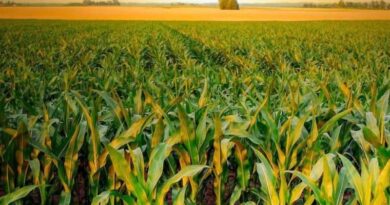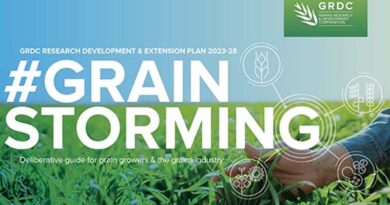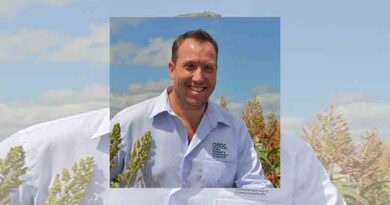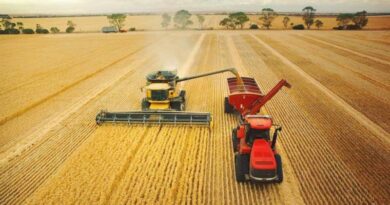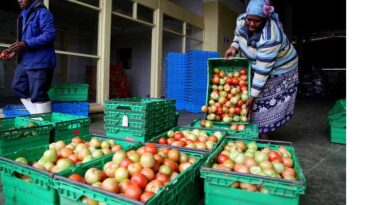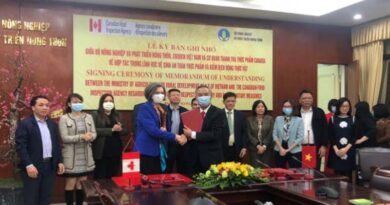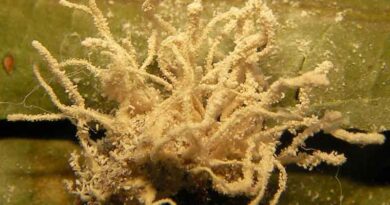GRDC infrastructure investments to enhance research capacity in WA
14 December 2023, AU: The Grains Research and Development Corporation (GRDC) has announced the Western Australian recipients of infrastructure grants delivered in 2023 to boost capacity in grains research, development and extension (RD&E).
The grants are part of a wider $20 million investment program to build Australia’s grains research capacity and support the enduring profitability of the nation’s grain growers.
GRDC Board chair and grain grower John Woods says that the program reflected GRDC’s priority of putting growers’ money towards investments that will make a genuine difference.
“Our investments must make an impact, and building Australia’s research capacity is critical for the future of the grains industry for generations to come,” Mr Woods says.
“We have some of the best researchers and technicians in the world working in Australia and to continue to attract and retain these quality specialists we need to have the best infrastructure and equipment.
“GRDC is investing in infrastructure in regional areas to support RD&E undertaken in local labs and facilities, and equipment and buildings to support on-farm research and extension through grower groups and other partners.”
One of the grant recipients is the University of Western Australia (UWA) agronomy lab in Crawley, utilised by the Australian Herbicide Resistance Initiative (AHRI), which has received a grant for equipment that will be used for the detection and quantification of radioisotopes.
This includes a radio flow detector, a biological oxidiser and a Tri-Carb liquid scintillation analyser, which will help AHRI to better understand how agricultural weeds develop metabolic resistance to herbicides to develop strategies to control resistant weeds.
AHRI Director Ken Flower says it is important to understand the mechanisms behind weed resistance to herbicides.
“This equipment will be used by AHRI to trace and quantify the movement of radiolabelled herbicides within weeds, and to compare how the herbicides are modified by susceptible and resistant weeds populations and in tolerant crops,” Dr Flower says.
“The equipment is also available for use by other research groups at UWA and beyond, in agriculturally important projects such as improving the heat tolerance of wheat.”
In Dalwallinu, the Liebe Group has received a grant for spraying equipment and a thresher upgrade at their Liebe Group grains laboratory, which itself was funded through a GRDC infrastructure grant in 2017.
The infrastructure includes a hand-held trial sprayer and associated accessories, penetrometer, grain threshing machine, dust extraction system and a ute mounted GPS device.
In Geraldton,has received a grant to set-up their own grain quality laboratory including the purchase of an Infratech digital grain analyser, sample cleaner and a vacuum separator and multi-seed venturi with flow attachment.
In April, GRDC announced an infrastructure grant for the Australian Export Grains Innovation Centre (AEGIC) to purchase new equipment to support pulse protein research.
Other recipients of the infrastructure grant funding in WA include:
- The Department of Primary Industries and Regional Development for the purchase of a cone seeder and upgrades to research glasshouses in Esperance;
- Edith Cowan University for the purchase of two growth chambers at the Joondalup campus to grow and collect plant material to understand phenotype and biochemical changes in various growing conditions;
- The Facey Group for the construction of a custom built shed and laboratory at their premises in Wickepin;
- Living Farm for the purchase of portable vehicle decontamination kits for servicing GRDC field trials and a seed counter, seed sample divider, seed treater, large capacity drying oven, dissection digital microscope and a compound digital microscope, as well as storage to enhance their grains research and processing facility in York;
- SLR Agriculture for the purchase of mobile irrigation trailer and a trial seeder for deep sowing; and
- Stirlings to Coast Farmers for a trial plot seeder, sprayer, drone and trailer for trial work in the great southern region.
The infrastructure will be received and installed over the next 12 months to build fundamental and long-term research capacity that will support innovation for WA grain growers.
Also Read: High Sugar Prices Create Signs of Substitution Among US Manufacturers
(For Latest Agriculture News & Updates, follow Krishak Jagat on Google News)




